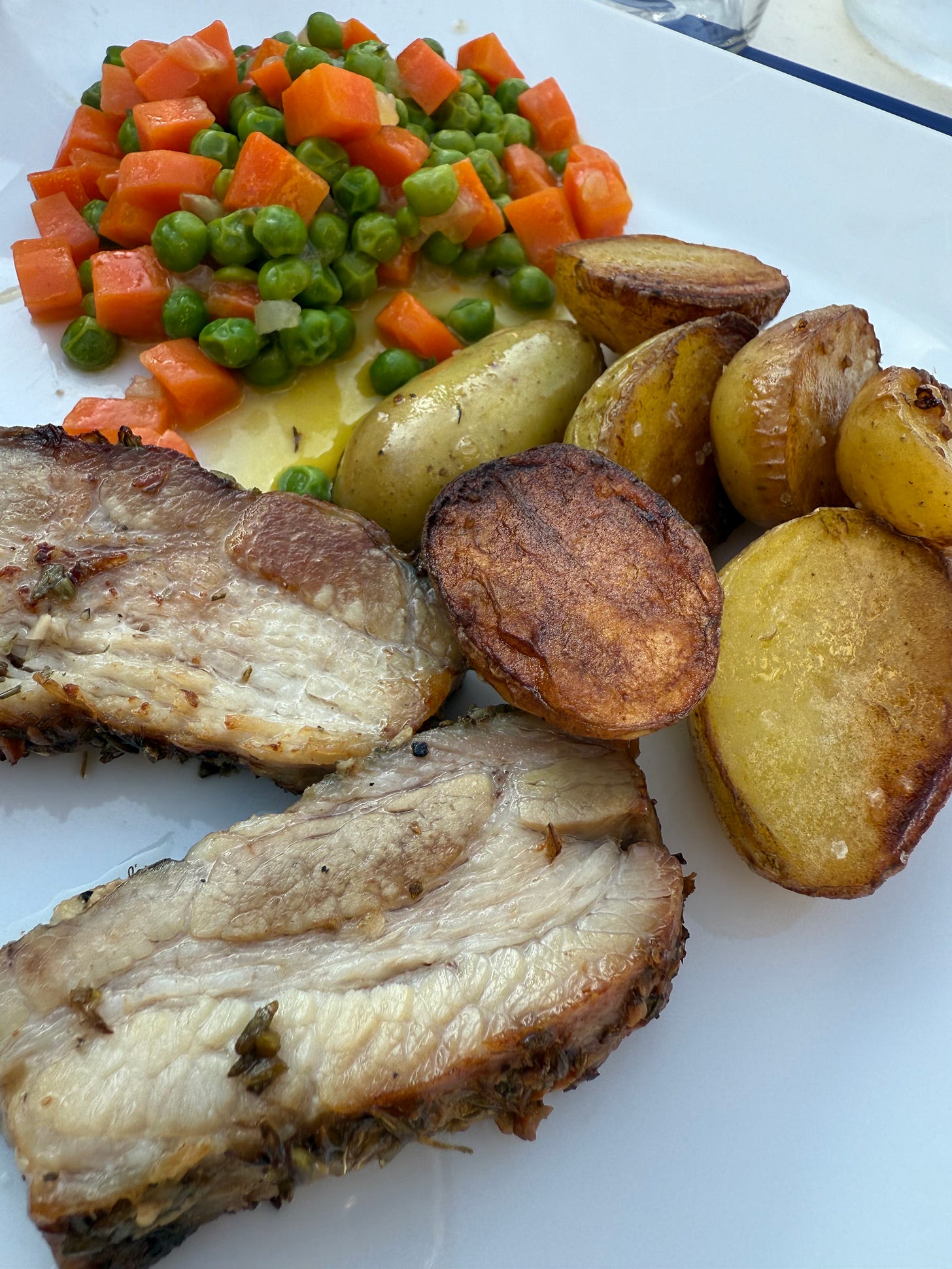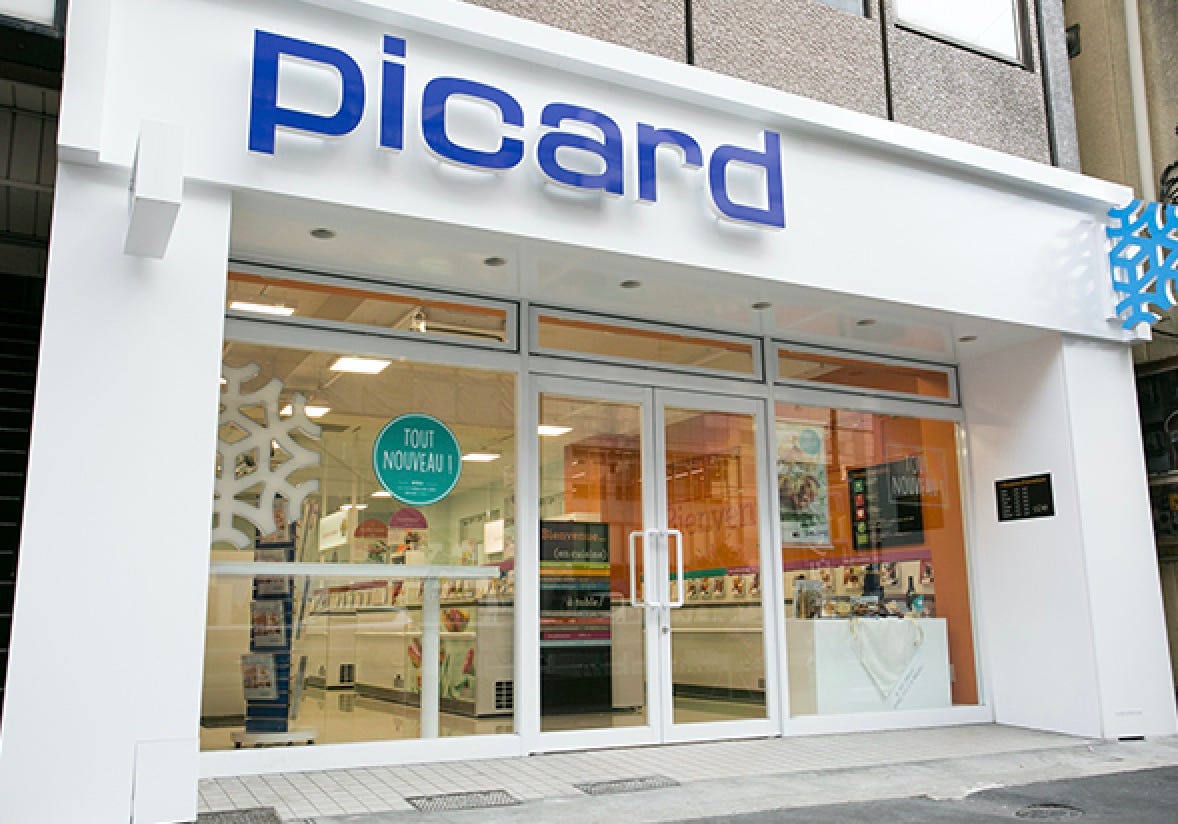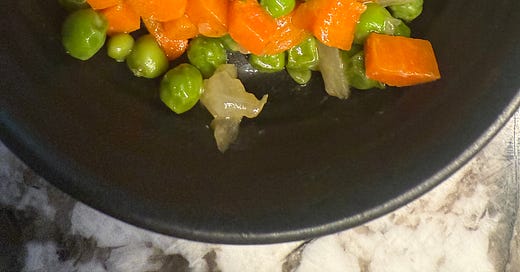Issue #214: Minding Your Peas & Carrots
A Familiar Side Dish Not from the Freezer, A Chilled Spanish Soup to Use Up Those Garlic Scapes
One night last week, Nate asked, somewhat disparagingly, why I was serving frozen peas and carrots. In fact, they were fresh English shell peas and local carrots cooked in miso butter.

Since reading Beaudrillard in graduate school, I’ve often thought about how our perception of food has been altered by the ersatz offerings of the food industry. The flavors of so many common foods, especially fruits, are bumped up beyond recognition. I suspect many people wouldn’t recognize the true taste of a ripe, local strawberry. Or worse, they might be disappointed it doesn’t taste as good as the fake strawberry flavor they are used to. #hyperreal
Similarly, so-called convenience foods color our attitude about and perception of the foods they are meant to help us with or replace. Often, they are full of junk. I’ve always read labels, but since recent research has brought the negative effects of ultraprocessed food to light, I’m even more vigilant. I was shopping for canned beans the other day, and was surprised to see that many of them, even some labeled organic, contained preservatives or other chemicals besides salt that I didn’t recognize. Why?
In other food cultures, what we might call convenience foods—canned tomatoes, tinned fish, pre-roasted beets, rotisserie chickens, even some frozen vegetables, such as spinach and frozen peas and carrots—are considered legitimate foods in their own right. Sometimes, they are so prized they are sold at a premium. When high cultural value is placed on something, we tend to leave it alone. However it is marketed, adulteration is usually about cost savings for the producer, not convenience for the consumer.

Freezing food is a form of convenience that pretentious gourmets tend to overlook or dismiss. As with the microwave, not everything you put in the freezer comes out in top form. But a few things sustain a chilly sleep and emerge as good as new. I have no idea why peas and carrots became a popular combination in the vegetable section of the freezer aisle. I likely first encountered them in a tiny aluminum compartment of a frozen Swanson TV dinner. Those peek-a-boo compartments made everything fun. And both texture and flavor-wise, peas and carrots hold up pretty well.
I also don’t know why I decided to make peas and carrots with the fresh English shell peas I purchased at the farm stand down the road. As is often the case with shell peas, I thought I would have more when I shucked them than I did. To make a decent side dish, I needed to augment them somehow. And I had some nice carrots at my disposal. I hadn’t thought that by combining fresh peas and carrots I would ostensibly be recreating something we only ever encounter in its simulated form. Were fresh peas and carrots ever a thing? If so, they are all but forgotten. I encourage you to try them, especially enhanced by the richness of butter and umami of miso.
RECIPE: Peas and Carrots with Miso Butter
2 tablespoons extra-virgin olive oil
1/2 medium white onion, preferably sweet, such as Vidalia, finely chopped
Salt
2 medium carrots, peeled and diced
1 cup fresh peas
1/4 cup chicken or vegetable stock, dry white wine, or water
1 tablespoon unsalted butter
1 tablespoon white miso
Pinch chopped fresh mint or thyme (optional)
Freshly ground black pepper
To a small saucepan over medium heat add the olive oil. When hot, add the onion and a pinch of salt and sauté for a minute or two, until soft. Add the carrot and continue sautéing until the carrot begins to soften, about 4 minutes. Add the peas and cook another 2 or 3 minutes. Add the stock. Cover the pan and let the peas steam until they begin to shrivel, about 4 minutes. Remove the lid, stir in the butter and miso until melted and dissolved. Allow the liquid to evaporate slightly to create a nice glaze. Add the mint or thyme, if using, some freshly ground black pepper, and serve.
A Bonus Recipe for Garlic Scapes
Speaking of having things to use up and augment in one way or another, Tuesday morning I got a mayday text from our farmer friend Jenny down the road. “Gotta use up a bazillion garlic scapes this week.”
As I wrote about last week, every Monday or Tuesday, in season, Jenny sends me the pick list for the week’s CSA and I prepare a recipe or two to include in the newsletter you receive when you pick up your weekly share. Jenny imagined a pesto. But I’d been thinking about making Ajo Blanco, the refreshing, chilled Spanish garlic bread soup, which is sometimes referred to as “white gazpacho” (to sell it to the garlic adverse), and suddenly I saw it in my mind as green instead of white, made with garlic scapes instead of garlic cloves. I had everything I needed to experiment and within minutes I sent her a recipe for this new variation—adding a handful of fresh spinach to enhance the color. It was beautiful and delicious and we enjoyed this Ajo Verde for lunch, garnished with cherries and butter beans.
Note, you can consume the soup as soon as it is prepared, but after a couple of hours in the fridge the flavors develop and meld.
RECIPE: Ajo Verde
Makes 1 quart, about 4 servings
1/3 cup (50g) blanched almonds
9 or 10 garlic scapes (70 g), trimmed of the buds, cut into pieces
2 1/2 to 3 cups cold water
3/4 cup packed (40 g) baby spinach
2 slices (90g) rustic white bread, fresh or stale, crusts removed, torn into pieces
3 tablespoons extra-virgin olive oil
2 tablespoons sherry or apple cider vinegar
1/2 teaspoon salt, to taste
Green seedless grapes or sweet cherries, split in half, as garnish (optional)
Place the almonds, garlic scapes, and 1 cup of the water in a powerful blender and pulse until finely chopped, stopping to scrape down the top and sides once or twice. Add the spinach, bread, and 1 1/2 cups more water. Pulse a few times to chop, scrape down the sides, then let the blender run to produce a fine, creamy purée. Add the olive oil, vinegar, and salt, and continue blending until very smooth. Adjust the consistency with more water, if necessary, to make a delicate soup. (It will thicken somewhat as it sits.) Let chill for at least 2 hours before serving. Adjust the seasoning with salt and and vinegar. Garnish with green grapes or cherries, if desired. The soup will keep for 2 or 3 days.






I've been trying to come up with a recipe to use up the pea pods because, as you have noted, they seem to take up the majority of what I buy and I end up with fewer peas than anticipated. It seems a waste to not do something with them. A few years ago, when I was still catering, I made an onion and pea pod broth for an appetizer, but in all honesty, it was bland and watery. perhaps approaching them as a component in a consomme might be more apt. But, what else can be done with them I wonder.